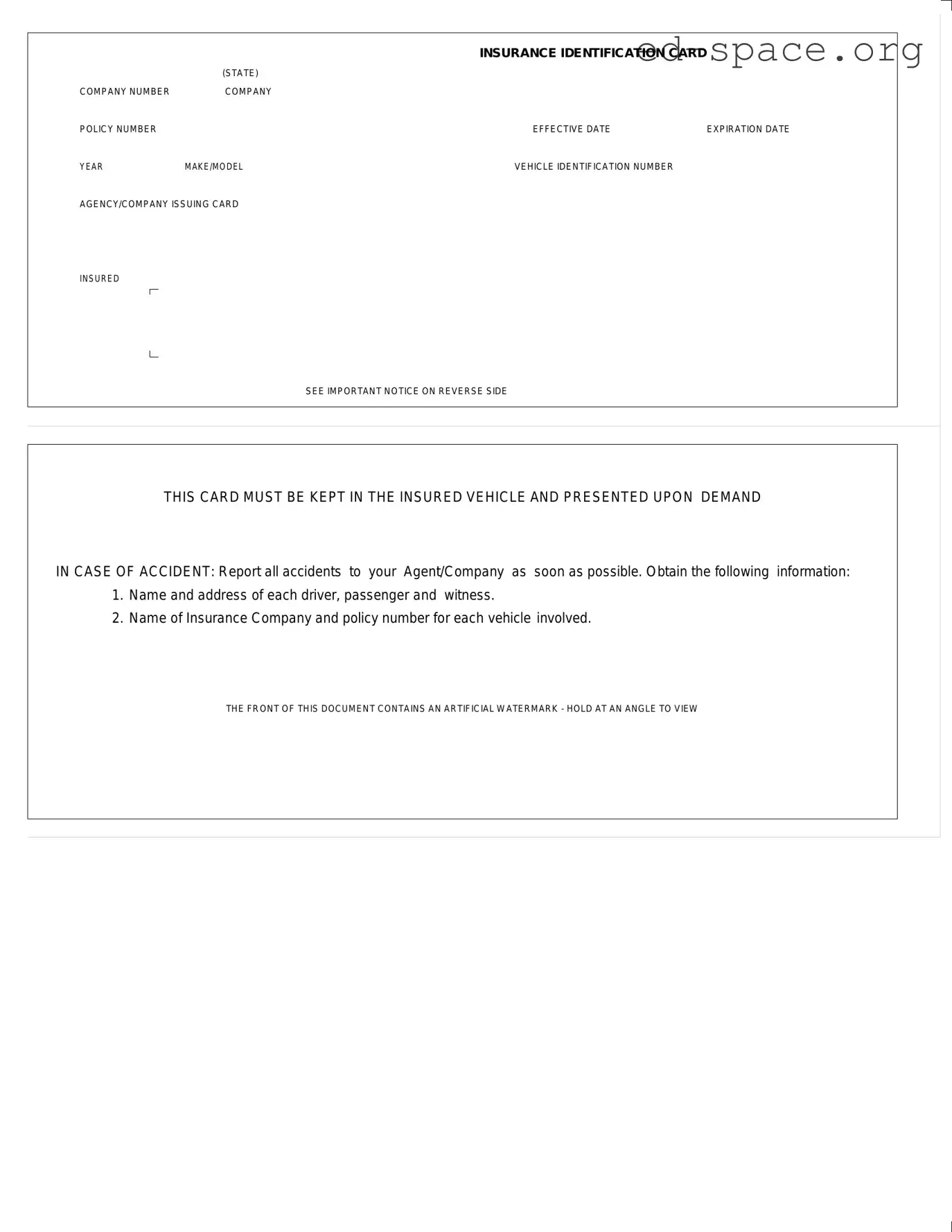What is an Auto Insurance Card?
An Auto Insurance Card serves as proof of your vehicle insurance coverage. It contains critical information such as the insurance company's name and contact details, your policy number, the effective and expiration dates of your policy, and details about the insured vehicle, including the year, make, model, and vehicle identification number (VIN). The card will also provide the name of the agency or company issuing the card and may include steps to follow in the event of an accident.
Why do I need to keep an Auto Insurance Card in my vehicle?
Most states require drivers to have proof of insurance with them while operating a vehicle. The Auto Insurance Card acts as this proof and must be presented upon demand by law enforcement officers or in the event of an accident. Keeping it in your vehicle ensures that you comply with these legal requirements and can quickly provide your insurance information when needed.
What should I do if I'm involved in an accident?
In the unfortunate event of an accident, you should first ensure the safety of everyone involved and call emergency services if needed. Then, it's important to report the accident to your insurance agent or company as soon as possible, as indicated on your Auto Insurance Card. The card suggests obtaining the name and address of each driver, passenger, and witness, as well as the insurance information for each vehicle involved. This information will be crucial for the claims process.
How can I view the artificial watermark on the Auto Insurance Card?
The front of the Auto Insurance Card features an artificial watermark designed to validate the document's authenticity. To view this watermark, simply hold the card at an angle to the light. This feature helps prevent fraud and ensures that the document you possess is genuine.
What happens if my Auto Insurance Card is lost or damaged?
If your Auto Insurance Card is lost or damaged, it's important to contact your insurance company or agent immediately to request a replacement. Most insurance providers can quickly issue a new card and may even allow you to print a temporary card from their website while waiting for the official card to arrive by mail. It's crucial to replace the card as soon as possible to avoid any legal troubles if you're pulled over or involved in an accident and cannot provide proof of insurance.
Is the Auto Insurance Card valid in all states?
While the Auto Insurance Card is widely recognized and required in many states, specific requirements can vary from one state to another. It's important to verify that your Auto Insurance Card meets your state's legal requirements for proof of insurance. Some states may also accept digital proof of insurance on your smartphone, but it's a good idea to keep a physical copy in your vehicle to ensure you're covered in all situations.

